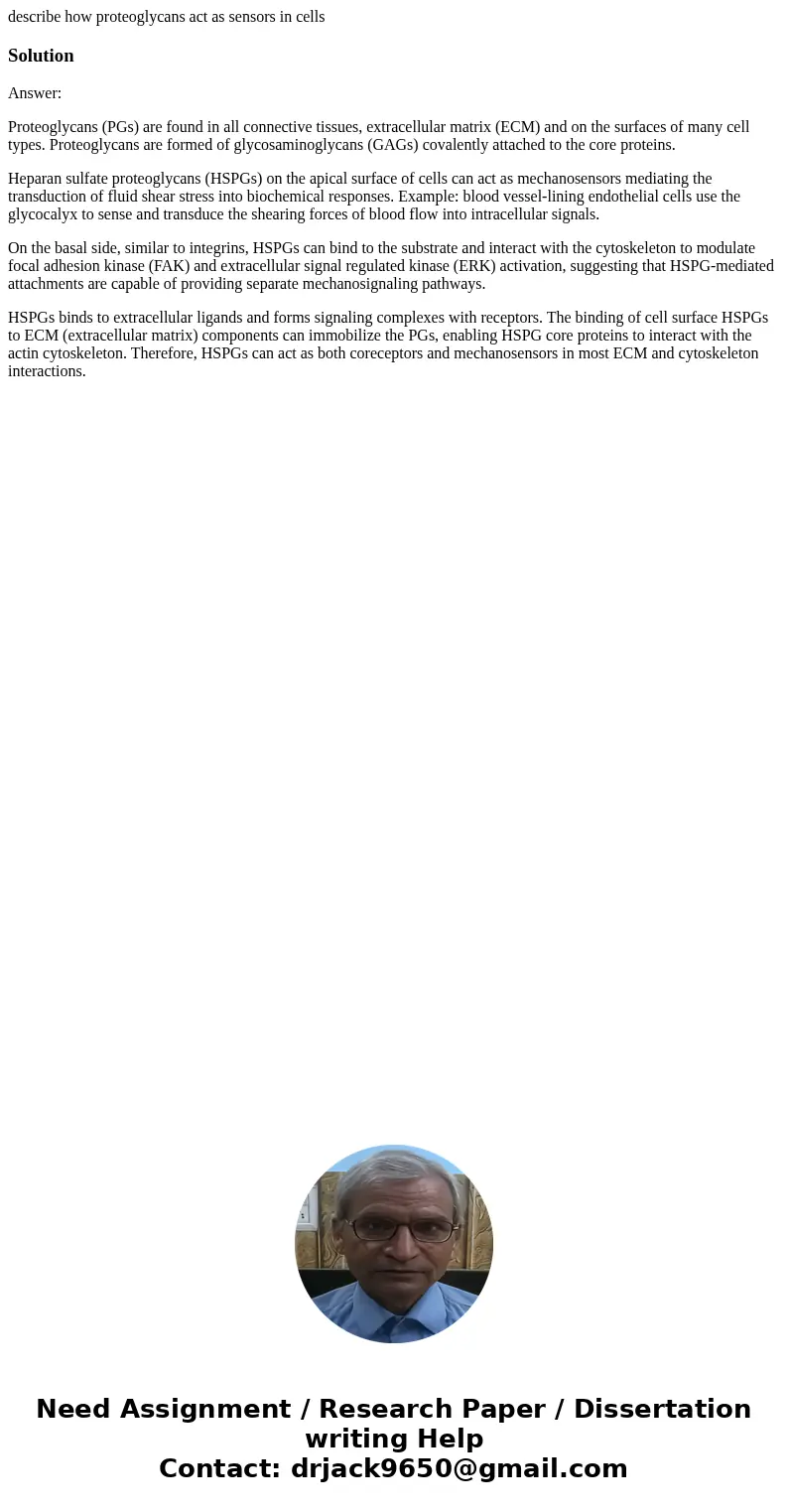describe how proteoglycans act as sensors in cellsSolutionAn
describe how proteoglycans act as sensors in cells
Solution
Answer:
Proteoglycans (PGs) are found in all connective tissues, extracellular matrix (ECM) and on the surfaces of many cell types. Proteoglycans are formed of glycosaminoglycans (GAGs) covalently attached to the core proteins.
Heparan sulfate proteoglycans (HSPGs) on the apical surface of cells can act as mechanosensors mediating the transduction of fluid shear stress into biochemical responses. Example: blood vessel-lining endothelial cells use the glycocalyx to sense and transduce the shearing forces of blood flow into intracellular signals.
On the basal side, similar to integrins, HSPGs can bind to the substrate and interact with the cytoskeleton to modulate focal adhesion kinase (FAK) and extracellular signal regulated kinase (ERK) activation, suggesting that HSPG-mediated attachments are capable of providing separate mechanosignaling pathways.
HSPGs binds to extracellular ligands and forms signaling complexes with receptors. The binding of cell surface HSPGs to ECM (extracellular matrix) components can immobilize the PGs, enabling HSPG core proteins to interact with the actin cytoskeleton. Therefore, HSPGs can act as both coreceptors and mechanosensors in most ECM and cytoskeleton interactions.

 Homework Sourse
Homework Sourse